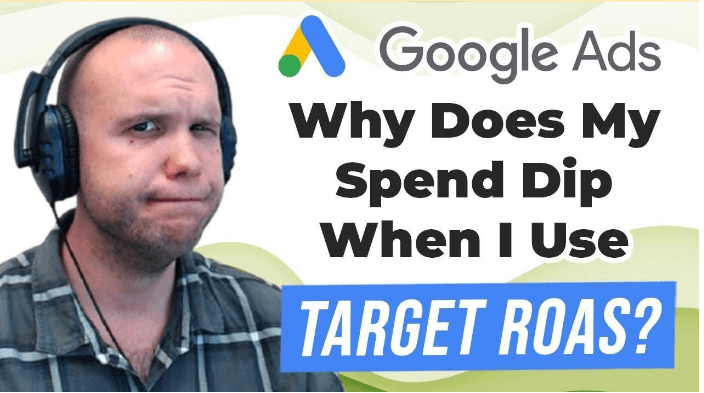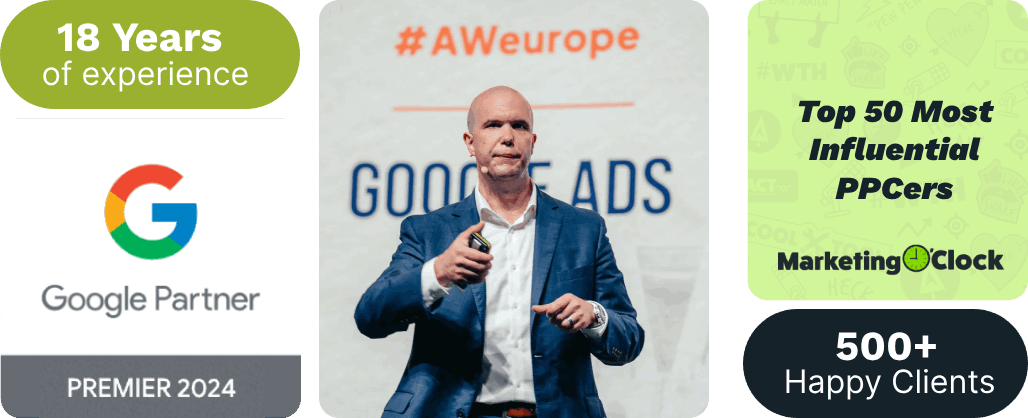Unlike Target CPA, which focuses on getting as many conversions as possible while limiting your costs, Target ROAS focuses on “getting revenue no matter what it takes.”
Which is why most advertisers consider Target ROAS as the “ultimate bidding strategy” in Google Ads.
The only problem? Using Target ROAS can cause your ad spend to dip.
Fortunately, there’s a way to increase your ad spend (and revenue) while maintaining full control over your products’ scalability.
That’s exactly what we’re going to talk about in this post.
To make sure we’re all on the same page, let’s start by defining what Target ROAS is.
Content:
What is Target ROAS?
How Target ROAS Works
Adjusting Your ROAS
Why Your Ad Spend Dips When You Use Target ROAS
Why Increasing Your ROAS Affects Volume
What is Target ROAS?

Target ROAS is one of the most popular bidding strategies in Google Ads. By using target ROAS, you’re asking Google to get you a specific return on your ad spend.
Here’s a quick example:
Let’s say you want to get $3 back for every $1 you spend.
Your target ROAS should be set to 300%.
This way, if your budget is $1,000 per month, then Google’s going to bring in $3,000 in revenue if you use target ROAS as your bidding strategy.
Sound easy? Well, it’s not all that simple.
That’s because to get that 300% return on ad spend, Google has to have enough data to sell your products.
And by data, what I really mean is conversions.
Let me tell you how it works.
How Target ROAS Works

Target ROAS works by analyzing and predicting the value of a conversion based on the users who search for your products.
If a user search is likely to generate a conversion, target ROAS will increase your keyword bids for that search.
But if your keyword doesn’t perform well, it can decrease your bids to ensure that it still gets you the return on ad spend you initially asked for.
Does that mean you can just set a target ROAS for your products even though you’ve only started advertising them?
You can. It’s just not going to work––at least based on our experience.
See, if you run products that don’t have enough conversion data, Google can’t guarantee that it’ll be able to sell enough of those products.
It’s even harder for Google to reach your target ROAS.
Asking Google to sell ten products when it hasn’t even sold one is, to be fair, quite impossible.
So how do you get from zero to ten sales? By adjusting your ROAS..
Adjusting Your ROAS

If you start with a 500% ROAS goal on day one, your campaign won’t run.
Why? Because Google doesn’t even know where to show the ads to bring in 500% ROAS.
If you want to sell products you haven’t sold yet, you must turn off your ROAS and let Google gather more data first.
Once you’ve gathered enough data (usually within 60-90 days), you’ll see some conversions and you can now use them as the basis on what your target ROAS should be.
The more conversions you have, the easier it is for Google to replicate your success and reach your target ROAS.
Why Your Ad Spend Dips When You Use Target ROAS
Let’s say your ROAS is 300% and you want to increase it to 500%.
You adjust your ROAS but all of a sudden, your activity drops.
Why is this happening?
Your ROAS controls the increase or decrease of your activity.
Which means if you have ten products and only five of those have conversions that are equal to or above your desired ROAS, Google will only focus on those five.
Google doesn’t care if you don’t get to sell your other products as long as it hits the target ROAS.
Remember, Google goes after those products that already have conversion data.
Why? Because it’s looking for the path of least resistance.
Think about it.
If you want to sell more of your products fast, who would you sell them to? People who haven’t even heard of your business or your previous customers?
Probably those who already bought, right?
It’s the same with Google. It finds products that are already selling well so it can give you the return on your investment with the least amount of ad spend.
Which leads me to my next point.
If you want to scale your other products that aren’t selling yet, you have to give them more ad spend.
The problem is when you start increasing your ROAS goal, Google starts eliminating a lot of audience.
Why Increasing Your ROAS Affects Volume
When you start to add a goal and you increase that goal, Google will give you exactly what you need–your target ROAS.
But it usually comes at a price. And that is volume.
Instead of cultivating a large group of your audience, spreading your budget to gather data on your other products, it will drop everything that it thinks won’t contribute to reaching your goal.
Yes, it will save ad spend and hit your ROAS but it will eliminate a lot of audience and will only put more ads to those people that are likely to convert.
Not a very good strategy for scaling.
So, how do you deal with it?
If 20% of your products are making 80% of your revenue, give them enough ad spend, time, and data. Then use Target ROAS bidding strategy.
Doing this helps you save money and increase revenue.
Once you have enough budget, then you can start scaling and promoting your other products.
Wash. Rinse. Repeat.
This method is what John Moran calls “The Stair-Step” approach, a proven strategy that helps you spend your daily budget efficiently while allowing Google to learn as much as it can to reach the ROAS you’re asking for.
And that’s it! Want to get more awesome content like this? Subscribe to our YouTube channel. We post the latest updates about everything Google Ads, every single day.
Author
Bryan is the marketing manager at Solutions 8, and has been on digital marketing since 2018. When he’s not working, you’ll find him working out at a local gym, reading personal development books, or playing music at home. He feels weird writing about himself in third person.
 Bryan Caranto
Bryan Caranto













